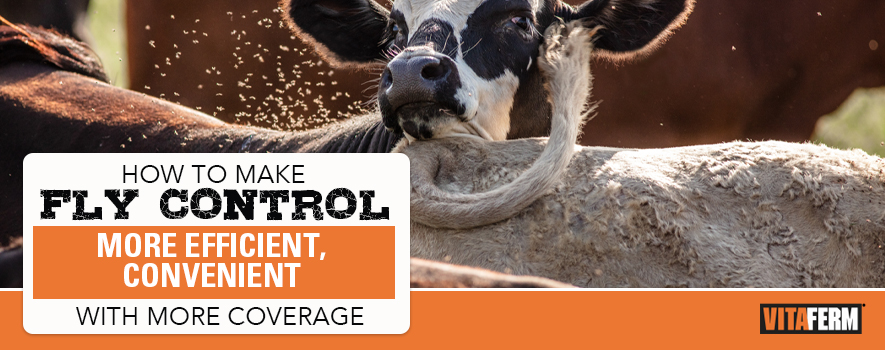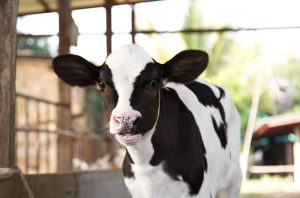
Fly control is an investment in your herd. Horn flies cost beef producers more than $1 billion annually, and face flies can contribute up to $150 million in losses per year. House flies can be responsible for the transmission of BVD and scours and influence BRD, while stable flies are a huge bite hinderance to feedlot cattle, costing gain and overall performance. So, would you rather control just one of these flies or all of them?
Since January 1, BioZyme® Inc. has converted from Altosid, a one-fly claim to ClariFly®, which carries a four-fly claim, in its products with IGR. ClariFly is a four-fly larvicide that prevents house flies, stable flies, face flies and horn flies from developing in and emerging from the manure of treated cattle. ClariFly interrupts the lifecycle of the fly through the active ingredient Diflubenzuron that inhibits the synthesis of chitin, according to Casey White, Director of Product Development at Central Life Sciences.
“Chitin is a major component of the exoskeleton of an insect, and as an insect grows and will molt, it will have to reform their exoskeleton. One component is that they deposit chitin to be able to form that exoskeleton. Without a properly formed exoskeleton, that insect – immature or fully mature, will die,” White explained.
The primary benefit of ClariFly is the four-fly claim. White explained that different fly species become pests in different management scenarios. Horn flies and face flies are typically bigger nuisances in the pasture because they seek out fresh, undisturbed manure piles to lay and hatch eggs in. Conversely, house and stable flies are peskier in confinement areas like feedlots, pens, corrals or barns, where manure build up exists and wet, organic matter like feed or hay is available to lay eggs in and hatch.
According to Gary Felger, Central Life Sciences Regional Sales Manager, research has shown that ClariFly will control up to 96% of the fly population when fed 30 days before you expect your first flies to arrive and continue to feed 30 days after your first hard frost. Furthermore, it poses no harmful effects to beneficial insects.
Even if you already are having flies, it is not too late to start feeding a product with ClariFly, Felger said. The life cycle of a fly is about three weeks and since the product is passed through to the manure where the eggs are laid and hatched, you should start seeing results in about three to four weeks.
Feeding products with ClariFly is the efficient, economical way to help control flies. In addition to its four-fly claim, it is a convenient, labor saving way to control the fly population. You are already feeding mineral, so this is a convenient method of getting fly control into your cattle, without the labor of spraying or implementing other external methods.
BioZyme’s newest fly-control product just launched April 1: VitaFerm® Concept•Aid® 5/S HEAT® with Clarifly®, combining the benefits of Concept•Aid, the HEAT package and ClariFly. Other products with ClariFly include VitaFerm® Concept•Aid® 5/S with Clarifly®, VitaFerm® HEAT® with Clarifly®, VitaFerm® Concept•Aid® 5/S CTC 3G with Clarifly®. All these products combine the Amaferm® advantage of increased intake, digestion and absorption with the best internal fly control on the market.
The economic benefits to proactive fly control through a high-quality mineral program definitely outweigh the costs. Think of your cows breeding earlier because they are not swatting flies or standing in the water or shade; they will wean off a heavier calf, leading to more profit. When you feed a mineral with ClariFly, your calves’ performance will increase, making them gain more efficiently and therefore putting more profit in your pocket. A mineral program AND fly control just makes sense.


